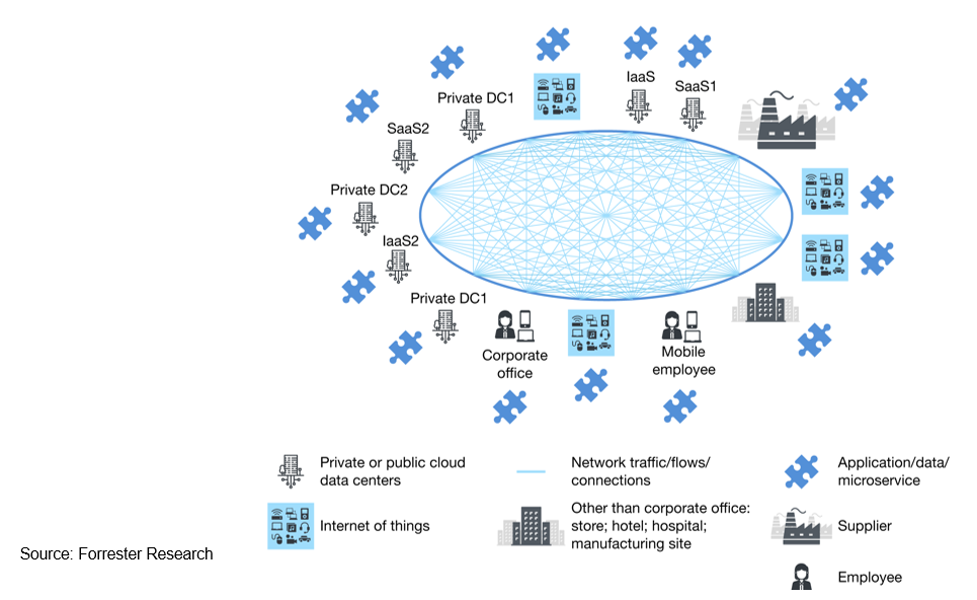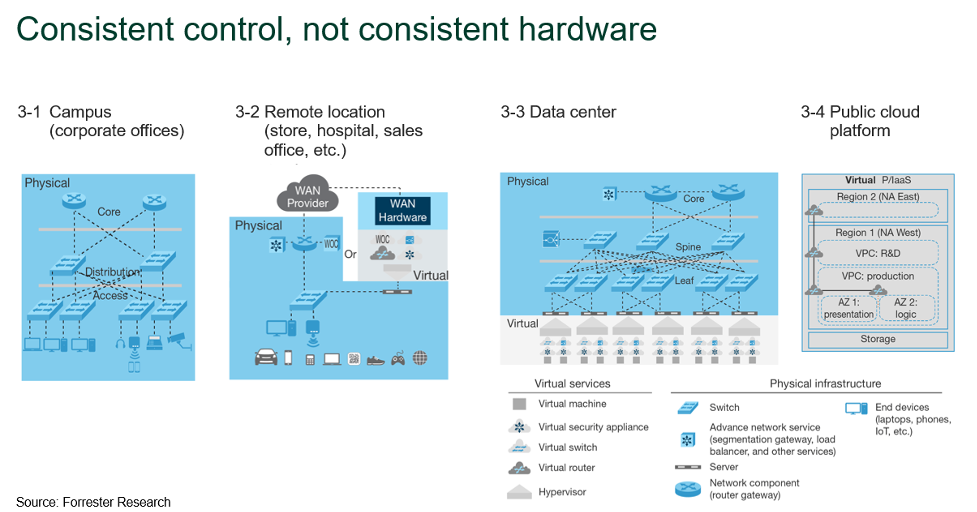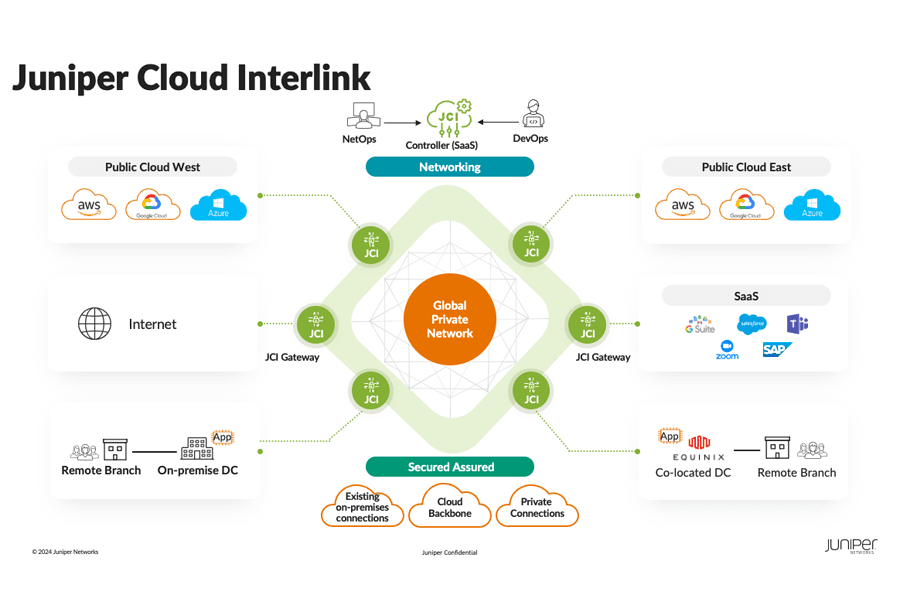Everyone Has a Plan Until They Get Punched in the Mouth?
It’s that time again. The one when we’re thinking about the upcoming year based on any intelligence we’ve been able to cobble together. As an IT leader, architect or engineer, you need to plan—demand from your customers continues to grow while you’re likely stuck with the same or less resources that you’ve always had. Meanwhile, with each passing year, your equipment gets older and more fragile, resulting in lots of hand holding, finger typing operations. While you may not be able to perfectly execute, a plan gets you closer to what you need to do.
So, how do you even begin to plan for a modern data center? How do you create a businesswide fabric to respond to your customers’ demands more quickly? Where do you start, especially where things may have gone sideways the past year? Andre Kindness, Principal Analyst at Forrester, joined us as a guest speaker to discuss these questions and more during our recent webinar: 5 Questions: What Matters Now in the Data Center?.
Five Questions
At Juniper Networks, we believe that being open is not only imperative for our solutions, but also in our discussions with customers. After all, the best plans are made when everyone has the most information possible. The following will briefly summarize some of the discussion during the webinar.
Why Begin Shifting from Vintage Networks Now?
Vintage is cool when it’s a guitar or a vinyl record, but not so much when we’re talking about anything in production IT. As you read the word vintage, you probably had images in your head of dusty switches, bad cabling and maybe even a three-tier architecture. While that certainly can describe it, buying something new and shiny isn’t the reason for moving away from a vintage network. The problem with older networks is the manual nature with which they must be run. Of course, this leads to human error, bad performance and terrifying change management, but more importantly, it affects the business directly.
What is Changing?
The data center has always been about the applications, there’s nothing new there. However, customers have more recently become accustomed to expecting the best user experience possible. Uptime is now table stakes. Customers are used to applications on their phones that update daily, sometimes hourly, offering new features and split-second reaction time.
Developers want not only their applications, but the most recent version of their applications available, AND now. That’s because these applications and services are what bring in revenue. Today, customers have choices. If you aren’t giving them what they want when they want it, they’ll likely walk.
What is a Businesswide Fabric?

A businesswide fabric is one that responds automatically to changes. A quick analogy might be to consider how herds move in nature. Think of a flock of birds that pivot all at one time, with seemingly no communication. In terms of technology, it might be that there’s an influx of traffic to one application. How does the network change to accommodate that?
The Forrester WaveTM: Open, Programmable Switches for a Businesswide SDN, Q3 2020, authored by Andre Kindness, specifies that: “A single, businesswide switching fabric will become the de facto architecture, built on Forrester’s five tenets of virtual network infrastructure (VNI) to create a businesswide software-defined network (SDN).” The Forrester report goes on to say that, taking into account the current trends and their tenets, customers should seek out solutions that:
1. Evolve in a linear, not a step, function no matter the starting point.
Our take: Juniper has always been a huge proponent of network automation. We believe in using industry standards and providing open APIs. Even our CLI requires a COMMIT command. Providing the gear removes a lot of barriers, but it does not help engineers cross that chasm from CLI to DevOps. We can’t expect engineers to take on entirely new skill sets through osmosis. We need to help engineers move in a linear function. First by identifying workflows, then automating low hanging fruit that will help reduce change management complexities and lead toward a more fungible network environment.
2. Standardize operations across hardware and virtual environments.
Our take: This doesn’t mean that there is a single pane of glass; that never-ending search only ends in heartbreak and marketing lies. What we can do is standardize on operations. We can keep things consistent, even beyond the network to the storage, compute, applications and security. We can use Operating Systems with open and stable APIs that allow standard orchestration systems and monitoring so that you’re not caught off guard.
This also addresses the fact that automation is not about making things go faster. Automation and orchestration are about building reliability into your networks. Being able to test operations in a standardized environment, then making changes through the use of automation in production will inevitably lead to consistency and reliability.
3. Set up the least amount of risk and the most options.
Our take: Many IT teams are dubious of all-in-one, pre-packaged fabrics, with proprietary protocols and little visibility, and with good reason. Whether you’re using multiple vendors for networking and security or you’re sticking with one vendor but want to avoid the downtime of a forklift upgrade, Juniper offers flexible and open switching architectures that are capable of migrating with you at your pace.
Why is the Operating System Important?

It’s no secret that Juniper’s OS, the Junos® operating system is just one of the many benefits that Juniper has to offer. Because we use one Junos experience in Juniper products, there’s an unparalleled consistency throughout our hardware solutions. The more consistent the OS and the APIs, the more consistent automation and orchestration can be as well. This goes back to that idea of standardizing network operations, but it goes beyond that as well.
Where Should I Start?
With the data center maintained by far more than just network engineers, the more you’re able to use the same automation tools as your colleagues in other specialties, and the more you’ll start speaking the same language. Building off of the foundation of a common language, we can start to break down silos.
You don’t need to learn an entirely new coding language to get started. Begin by looking at something you have to do every day or every week. Break that down into a “human language” workflow, including any approvals necessary and then figure out how to automate that first step.
What Now?
Have more questions? Don’t forget to watch Andre Kindness and I chat about all this and more in this half hour webinar: 5 Questions: What Matters Now in the Data Center.


